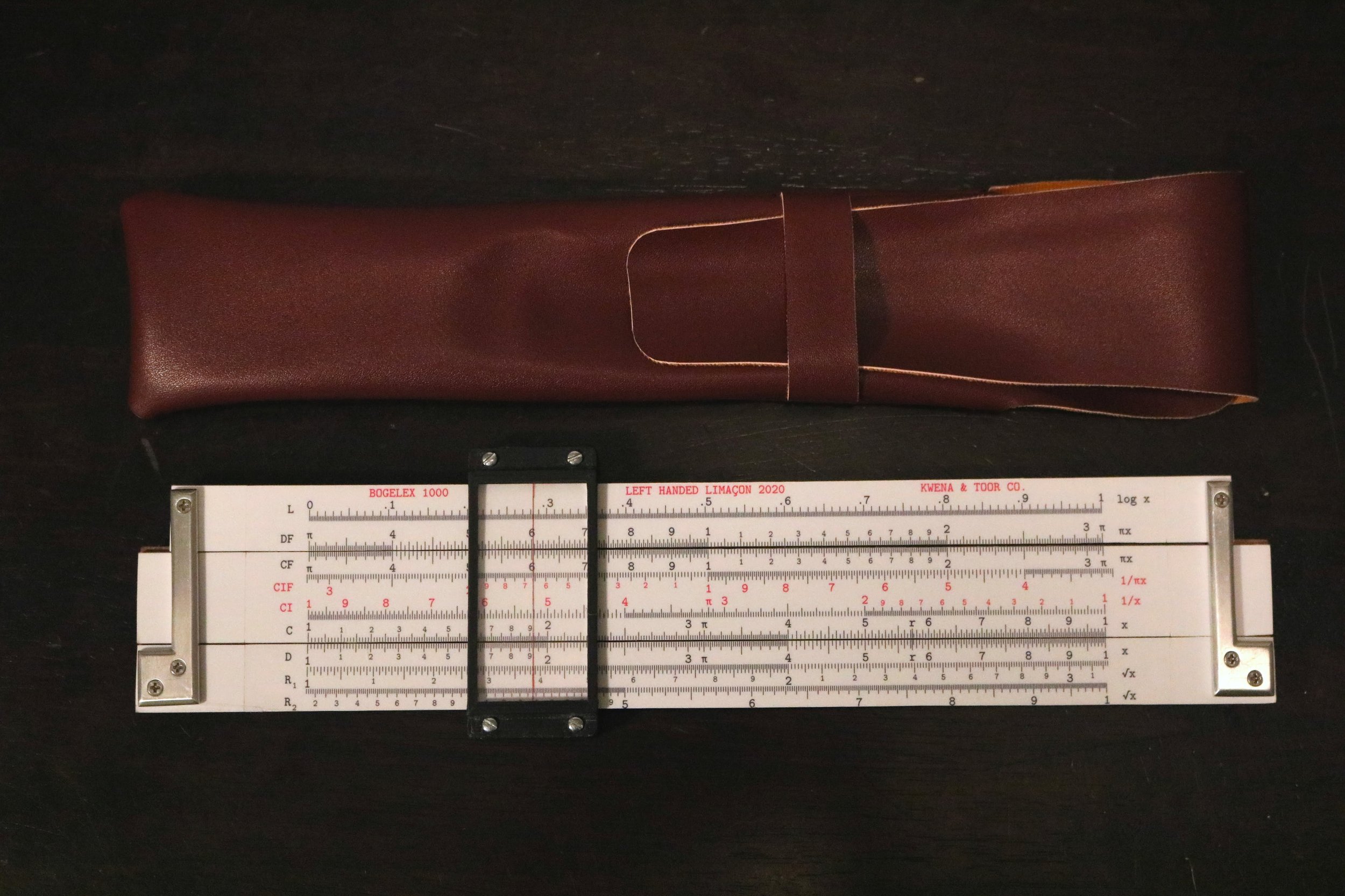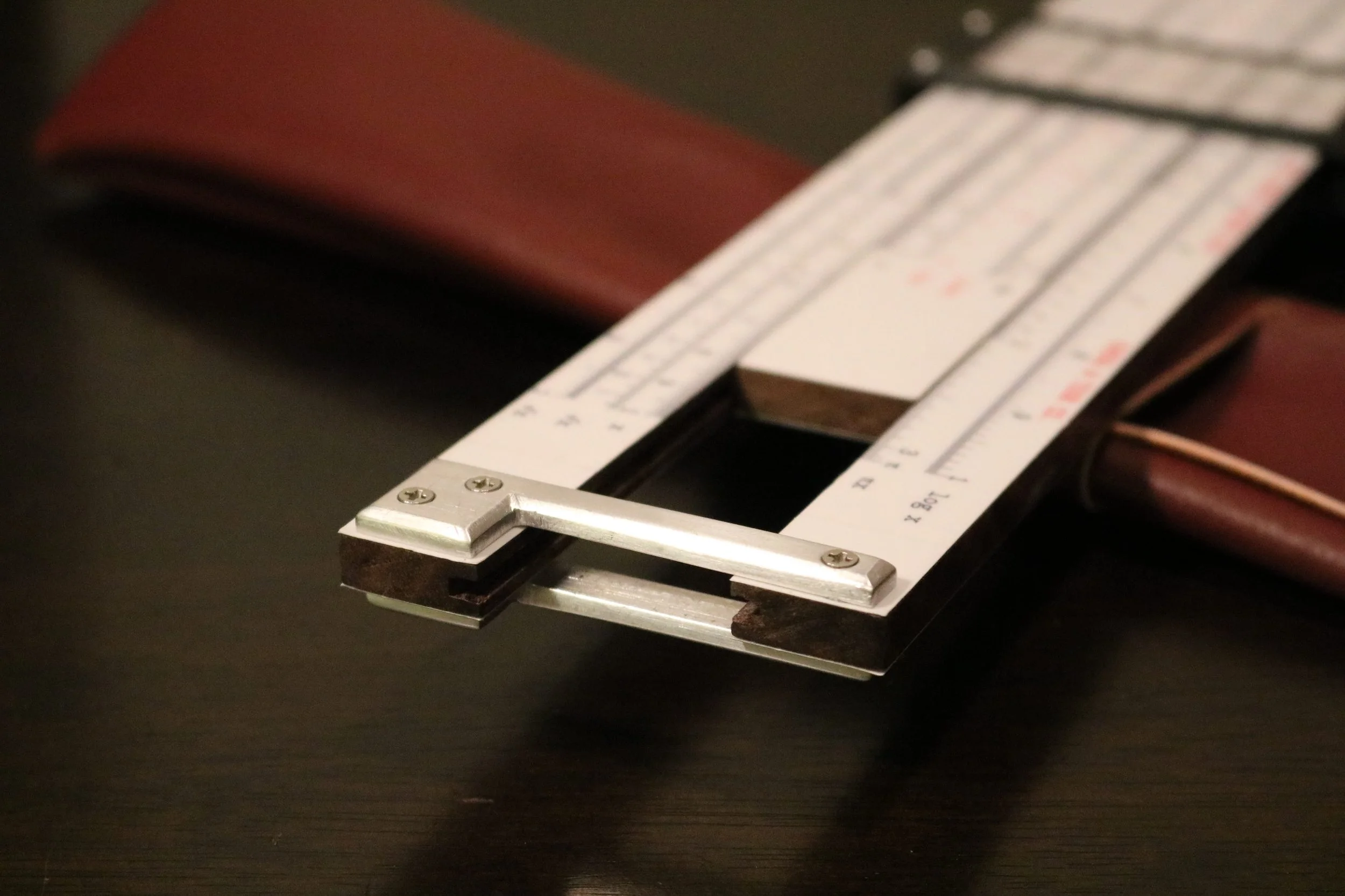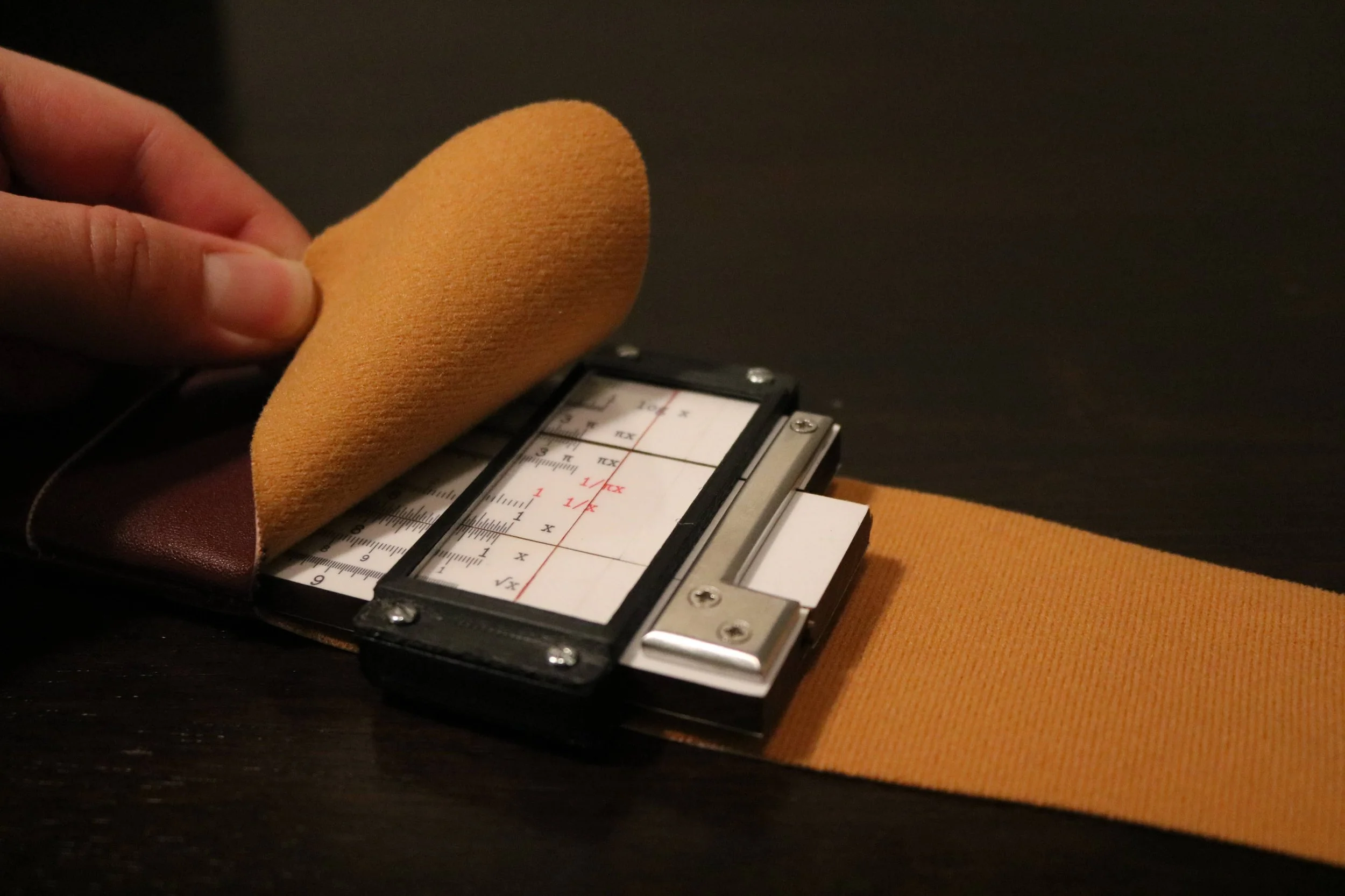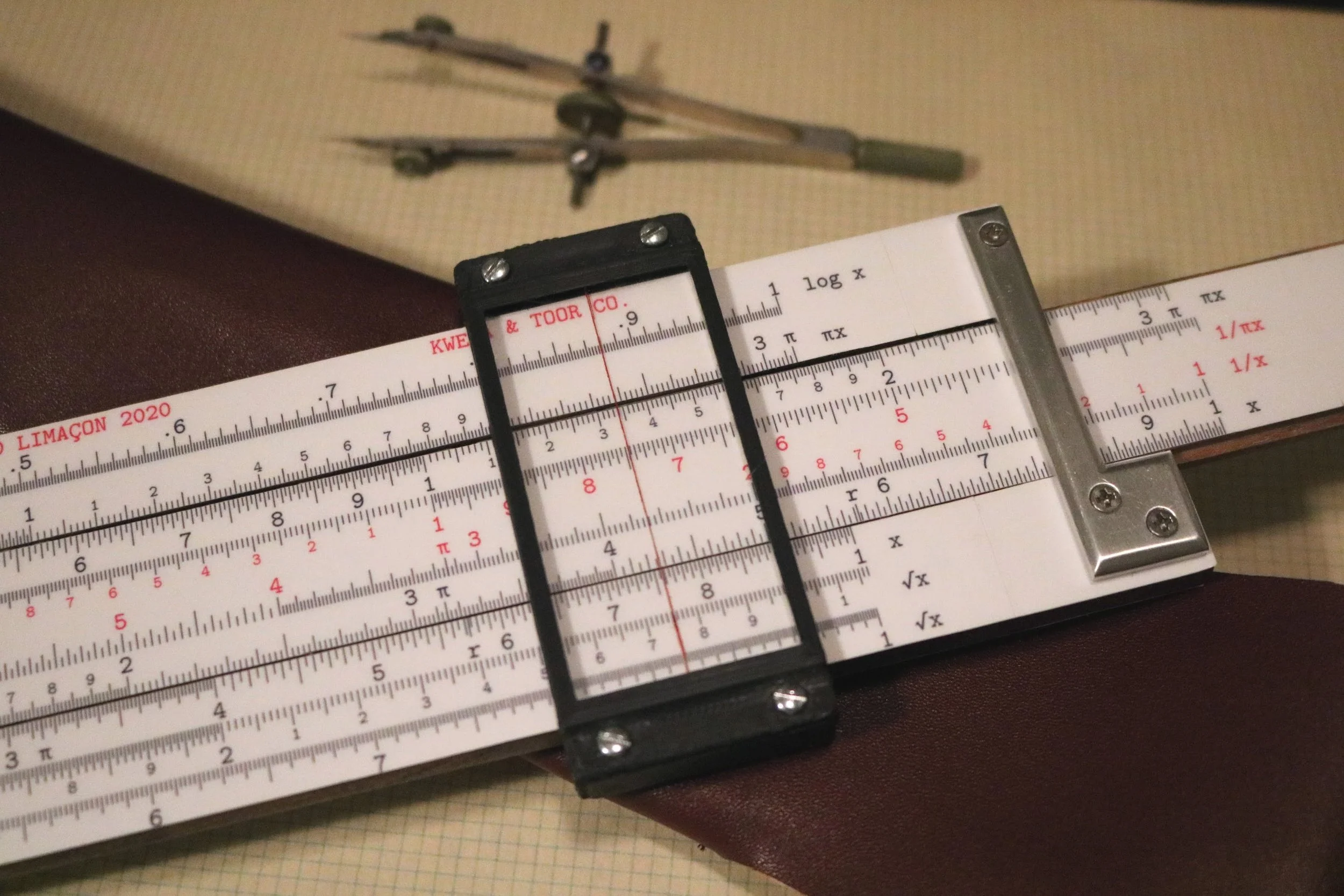
Spring 2020
A Vintage Calculator for the Modern Day
Scroll ↓
Up until the rise of electronic calculators in the 1970s, the iconic symbol of the engineer was the trusty slide rule. By using the principle of logarithms established by John Napier in 1614, these sliding sticks can:
multiply and divide
square and cube
take square and cube roots
do logs and exponents
trigonometric functions
and more!
using not a watt of electricity
I became interested in the slide rule after picking one up at a flea market shortly after watching astronauts use them in the Apollo 13 movie. To build a version of my own, I created a Python program to create the scale designs. The program generates the tick marks at precise locations according to mathematical functions. This scale design could then be printed onto a sticker paper to be placed on the wooden sliders
I then modeled the design in CAD, including three wooden components, four metal parts, and a cursor formed of two pieces of acrylic and four plastic parts I would 3D print plus a tiny spring piece.
The simple but elegant design of the slide rule reminds us that the best designs are those that accomplish their goal without over-complicating it
After assembly, I sewed a faux leather case to safely store the slide rule. The final instrument is effective at performing calculations to around 0.2% accuracy, which matches that of manufactured slide rules. For the full documentation of the slide rule, including info about the math behind it, check my Instructables article: Slide Rule for the Modern Day



